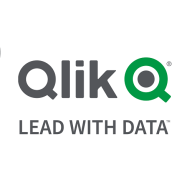

Qlik Replicate and StreamSets compete in the data replication and data pipeline platform category. StreamSets seems to have the upper hand due to its no-code interface and extensive connectors, appealing to users without extensive coding knowledge.
Features: Qlik Replicate provides extensive data manipulation, transformation, and real-time change data capture capabilities, facilitating seamless data replication without the need for additional ETL tools. Its user-friendly configuration and detailed logging enhance operational efficiency. StreamSets offers a no-code interface with extensive connectors, including Hadoop and cloud services, supporting both batch and streaming data flows. It also features data drift resilience and a control hub that streamline data management tasks.
Room for Improvement: Qlik Replicate requires enhanced error reporting, more intuitive handling of dual-destination processes, and an improved user interface. Users face challenges with complex issue tracing and slower migrations. StreamSets has a basic GUI, complex logging, and limited SAP HANA support. Its documentation and error-trap handling need improvements for clearer guidance for newcomers.
Ease of Deployment and Customer Service: Qlik Replicate is suitable for diverse environments including on-premises and hybrid clouds, with customer support receiving mixed reviews due to response times and licensing queries affecting satisfaction. StreamSets is favored for public cloud deployments but faces criticism for high support costs, limiting access to customer service.
Pricing and ROI: Qlik Replicate's pricing is high and core-based, making it primarily suitable for larger enterprises though providing significant ROI through reduced operational costs and efficient resource allocation. StreamSets offers open-source and other licensing models but is often seen as prohibitively expensive for small enterprises. Despite substantial ROI, licensing fees may include charges for updates.
I conducted a cost comparison with the AWS service provider, and this option is much cheaper than the Kinesis service offered by AWS.
Customers have seen ROI with Qlik Replicate because they get their data for analysis faster, enabling quicker decision-making compared to traditional data sourcing methods.
Even priority tickets, which should be resolved in minutes, can take days.
Support response times could be improved as there are sometimes delays in receiving replies to support cases.
IBM technical support sometimes transfers tickets between different teams due to shift changes, which can be frustrating.
The system could be scaled to include more sources and functions.
It is a core-based licensing, which, especially in the banking industry, results in the system capacity being utilized up to a maximum of 60%.
Qlik Replicate could be improved in the next release by incorporating more monitoring options to monitor the logs.
It would be beneficial if StreamSets addressed any potential memory leak issues to prevent unnecessary upgrades.
For Qlik Replicate, the setup cost includes the requirement of a server, which represents the hardware cost that must be covered.
Licensing is calculated based on the machine's total capacity rather than actual usage.
The most valuable feature of Qlik Replicate is their change data capture feature.
Data retrieved from the system can be pushed to multiple places, supporting various divisions such as marketing, loans, and others.
It allows a hybrid installation approach, rather than being completely cloud-based or on-premises.
| Product | Market Share (%) |
|---|---|
| Qlik Replicate | 2.3% |
| StreamSets | 1.5% |
| Other | 96.2% |


| Company Size | Count |
|---|---|
| Small Business | 9 |
| Large Enterprise | 10 |
| Company Size | Count |
|---|---|
| Small Business | 9 |
| Midsize Enterprise | 2 |
| Large Enterprise | 11 |
Qlik Replicate is a data replication solution for replicating data from one source database to another for business intelligence software. It offers data manipulation and transformations, replication without impacting source databases, and ease of use without needing ETL. The solution is stable and user-friendly, with detailed logging and support.
Qlik Replicate has improved the organization by allowing each team to replicate their data into a single-source data location. The most important feature of Qlik Replicate is its ability to replicate and update records without needing a programmer.
StreamSets is a data integration platform that enables organizations to efficiently move and process data across various systems. It offers a user-friendly interface for designing, deploying, and managing data pipelines, allowing users to easily connect to various data sources and destinations. StreamSets also provides real-time monitoring and alerting capabilities, ensuring that data is flowing smoothly and any issues are quickly addressed.
We monitor all Data Integration reviews to prevent fraudulent reviews and keep review quality high. We do not post reviews by company employees or direct competitors. We validate each review for authenticity via cross-reference with LinkedIn, and personal follow-up with the reviewer when necessary.